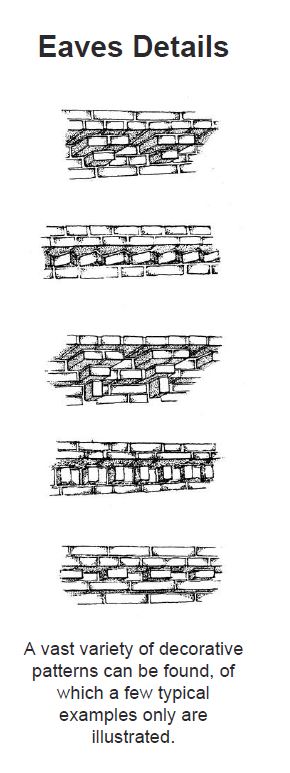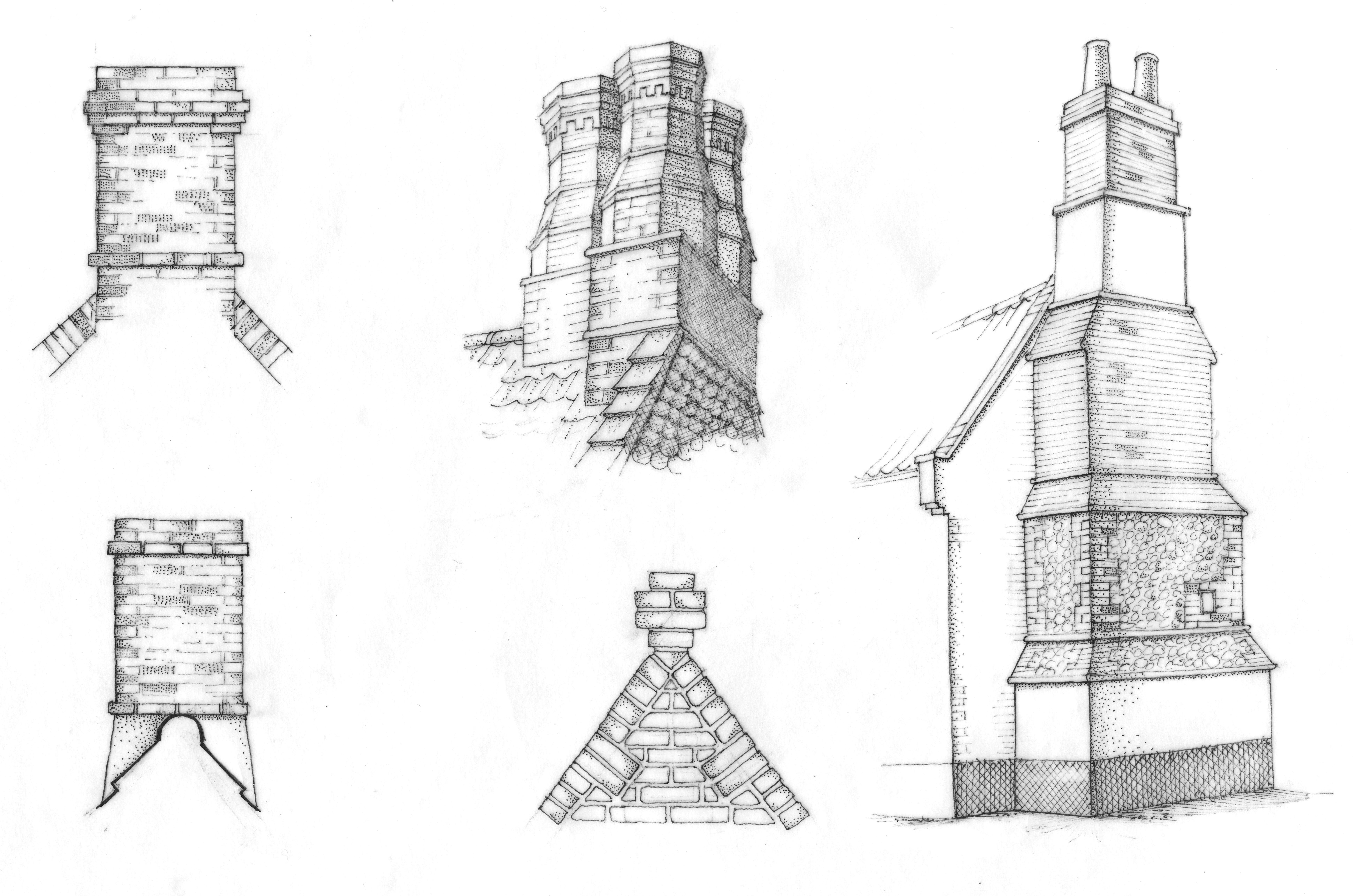Eaves and Verges
Whilst roof slopes can finish flush, they are often more successful when they incorporate overhanging eaves and verges. Creating depth and shadow line to elevations is often important to help add interest and articulation to elevations. For traditional style house types, the use of bargeboards and fascia boards is discouraged at eaves and verge level. There is a wide range of designs for dentil courses and corbelled brickwork which can be used to create maintenance free and more attractive solutions. Verges can be finished with parapets to frame roofslopes.
On more contemporary designs, curved, profiled or angular roof slopes can be successfully integrated especially when they react to the topography of features of the site, their use maybe less appropriate in sensitive urban locations with an established form and character.
Chimneys, Flues and Vents
Even though they are only occasionally needed today to fulfil their proper function, chimneys are nonetheless useful in topping off buildings. By breaking through ridge lines they help 'lift' an elevation and create visually interesting roofscapes. By comparison, buildings without chimneys can appear unfinished. Their use, albeit in adapted new forms, will therefore continue to be encouraged.
Modern wood burning flues and similar venting should be treated in a matt black or grey finish to ensure they remain recessive within the roofslope. Siting flues on rear slopes or in less obtrusive positions will help in mitigating their impact.

